I am trying to figure this cap out and locate a new one. It says 107K and 10K on it. Is is polarized ? what is it and where do i find one ?

I am trying to figure this cap out and locate a new one. It says 107K and 10K on it. Is is polarized ? what is it and where do i find one ?

It's a 10V 100uF 3-leaded tantalum capacitor from Kemet (T396 series -- see Kemet's website and TTI). The "K" with the bars above and below is a trademark of Kemet. The yellow encapsulation and the stencil font of the numbering are consistent with Kemet capacitors as well, but I can't say for sure whether other companies have copied them.
Their circuit diagram shows two ground leads, presumably to reduce ESR and inductance (although it seems like if you really want to reduce ESR and inductance you should use a surface mount capacitor)
Aha, this is what they say about the three-lead design:
The three-leaded design (the anode is in the center) enables operators to insert the capacitors into printed circuit boards correctly without having to visually determine polarity. This timesaving device also eliminates board damage that may result from incorrect insertion.

Nope, I think stevenvh is right. It's a ceramic resonator.
OK, I have changed my mind again after seeing Jason's answer. This is the reason Murata give for their three terminal capacitor.

According to Murata, they are used when you want a decoupling capacitor with greatly reduced effective series inductance.
This looks much like the dual capacitors found in this discussion thread.
Here's a picture:

I would argue that they're non-polarized ceramic capacitors.
From the three pins I'd say a ceramic resonator, and then the 107K reminds me of the 10.7MHz intermediate frequency in FM receivers. Resonators have their frequency as marking. So probably a 10.7MHz resonator. (Though in receivers crystals are more used than resonators, because they're more precise and more stable)